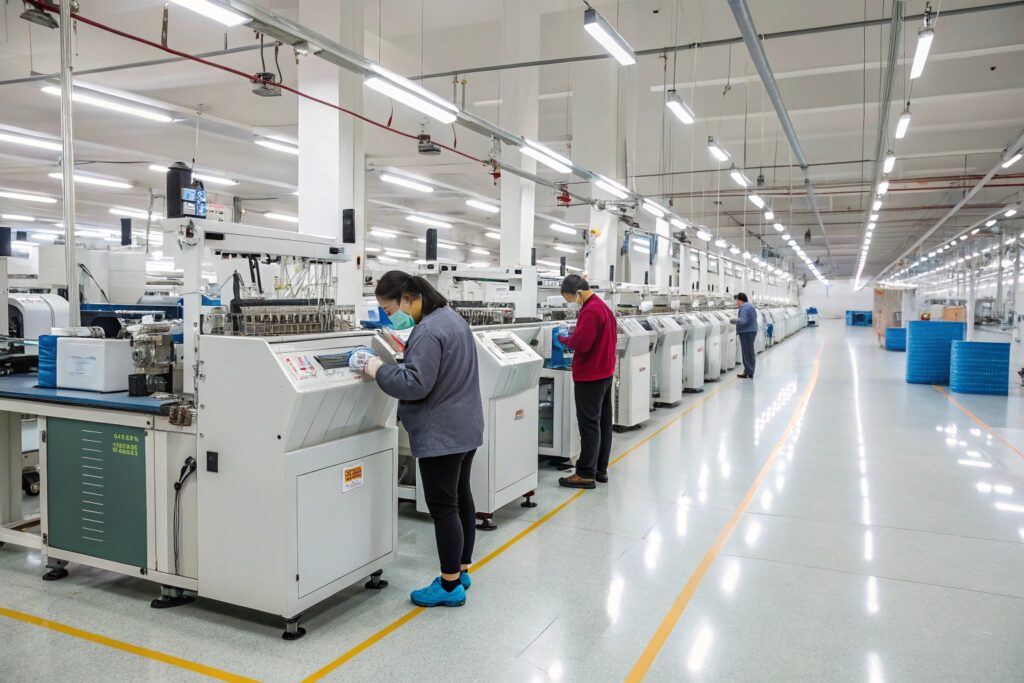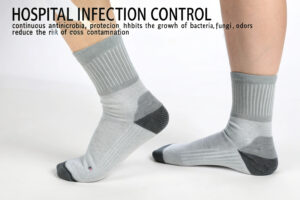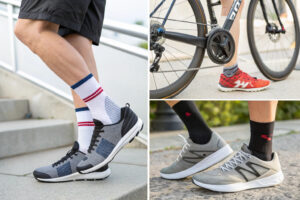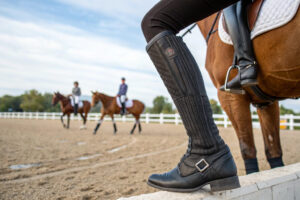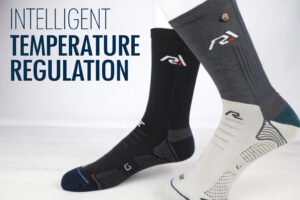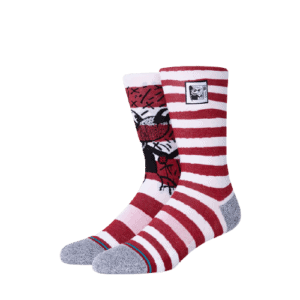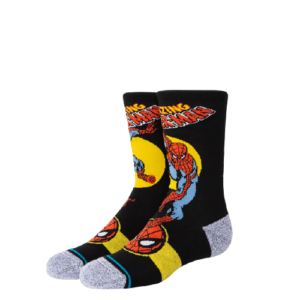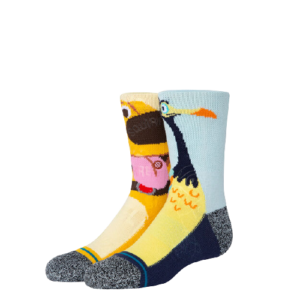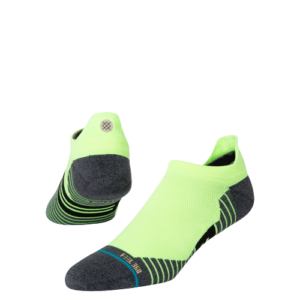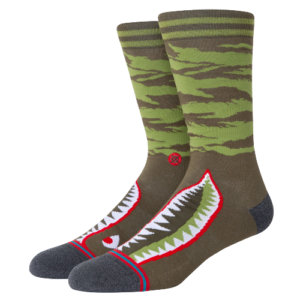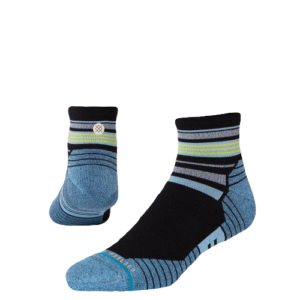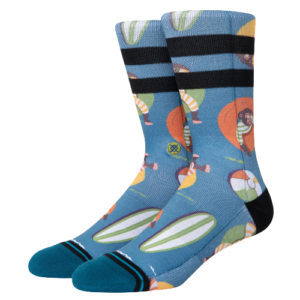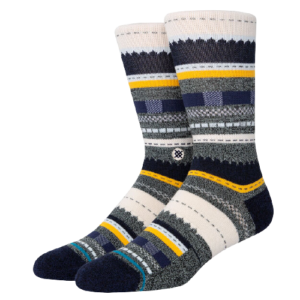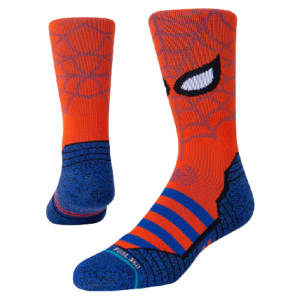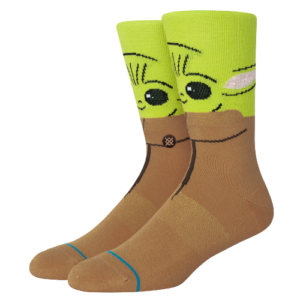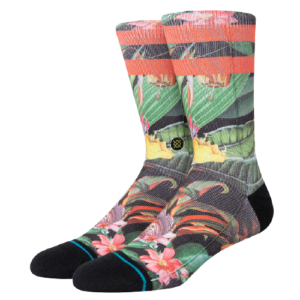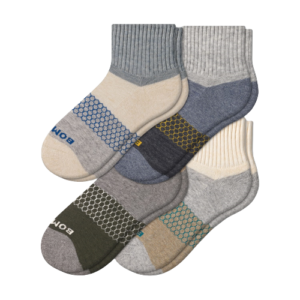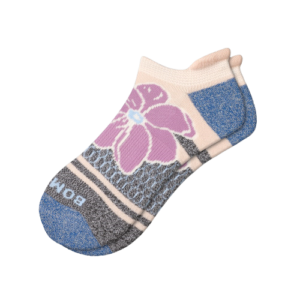Compression socks have gained massive popularity—from hospitals to sports arenas. But are they just another trend, or do they offer proven benefits? If you've ever wondered how a simple piece of fabric can reduce swelling, boost recovery, and enhance athletic performance, you're not alone. Many buyers like Ron—confident, quality-focused professionals from the U.S.—ask me this every trade show.
Compression socks work by applying graduated pressure to the legs, promoting better blood flow, reducing swelling, and accelerating recovery. Their effectiveness hinges on precision knitting, certified materials, and tested compression levels.
If you're in the business of sourcing or selling socks, understanding the science and manufacturing behind compression socks can help you make better purchasing decisions. Let's break it down.
How Do Compression Socks Work?
Compression therapy isn't new—it’s rooted in centuries-old medical science. But today’s compression socks combine modern textile engineering with biomechanics to deliver optimal results.
Compression socks improve venous return, reduce fatigue, and prevent swelling by applying gradient pressure—tightest at the ankle and gradually loosening upwards.
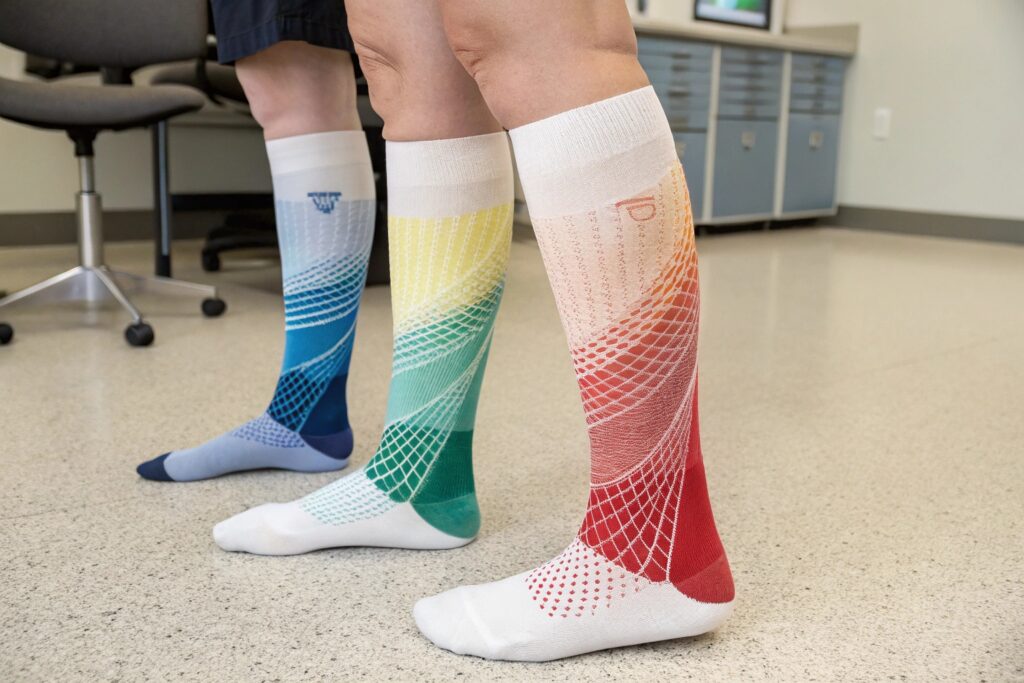
What is Graduated Compression and Why Does It Matter?
Graduated compression is key to the sock’s effectiveness. By concentrating pressure near the ankle and decreasing it towards the calf, these socks help push blood back toward the heart. This supports better circulation and reduces the risk of issues like deep vein thrombosis (DVT) and chronic venous insufficiency.
This gradient is often measured in millimeters of mercury (mmHg), ranging from 15–20 mmHg for light use to 30–40 mmHg for serious medical conditions. Quality compression socks, like those tested in our CNAS-certified lab, meet these precise pressure standards through advanced knitting machines and elastic yarns.
Why Do Athletes and Patients Rely on Compression Socks?
Both patients and athletes rely on these socks for different reasons but similar outcomes: reduced muscle vibration, faster recovery, and sustained comfort. Runners use them to prevent shin splints and lactic acid buildup, while post-operative patients wear them to avoid blood pooling.
In both cases, compression socks must be breathable, antibacterial, and offer moisture-wicking features. That’s why at GlobalSock, we develop compression products using antibacterial nylon blends and seamless toe technology for extra comfort.
What Are the Key Features of Medical-Grade Compression Socks?
Modern compression socks are not just tight socks. They require certified design, high-quality fabrics, and durability for daily use.
Effective compression socks are made from elastic yarns, have reinforced heels and toes, seamless construction, and offer firm but breathable compression levels.
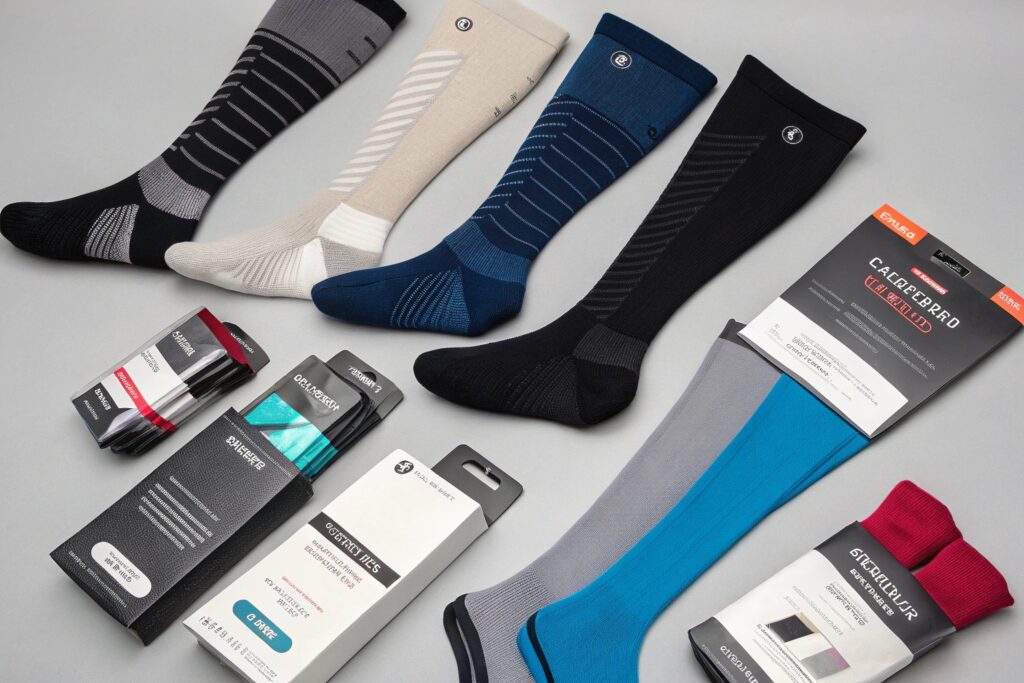
Which Fabrics Offer the Best Performance and Comfort?
Material selection is critical. Our clients often ask for socks made with Nylon/Spandex blends, Bamboo Viscose, or Merino Wool, all of which provide elasticity, moisture-wicking properties, and comfort.
Nylon adds strength and durability, spandex provides stretch, while natural fibers ensure breathability and odor resistance. You can learn more about the performance of moisture-wicking fabrics and how they benefit compression products. Another good resource is this comparative study on medical compression materials.
What Technical Design Details Ensure Comfort and Support?
A medical compression sock isn't complete without features like:
- Seamless toe closure to reduce pressure points
- Cushioned soles for longer wear
- Reinforced heels for stability
- Breathable mesh zones
At GlobalSock, we implement AI-based trend prediction and use circular knitting machines with up to 200 needles to create anatomically contoured compression zones—tailored for medical patients and sports users alike.
Why Are Compression Socks Popular in Sports?
From marathons to cycling events, athletes trust compression socks to enhance their performance. But their popularity isn’t just hype—it’s science-backed.
Sports compression socks improve oxygen delivery to muscles, reduce soreness, and support faster recovery by increasing circulation and reducing vibration.
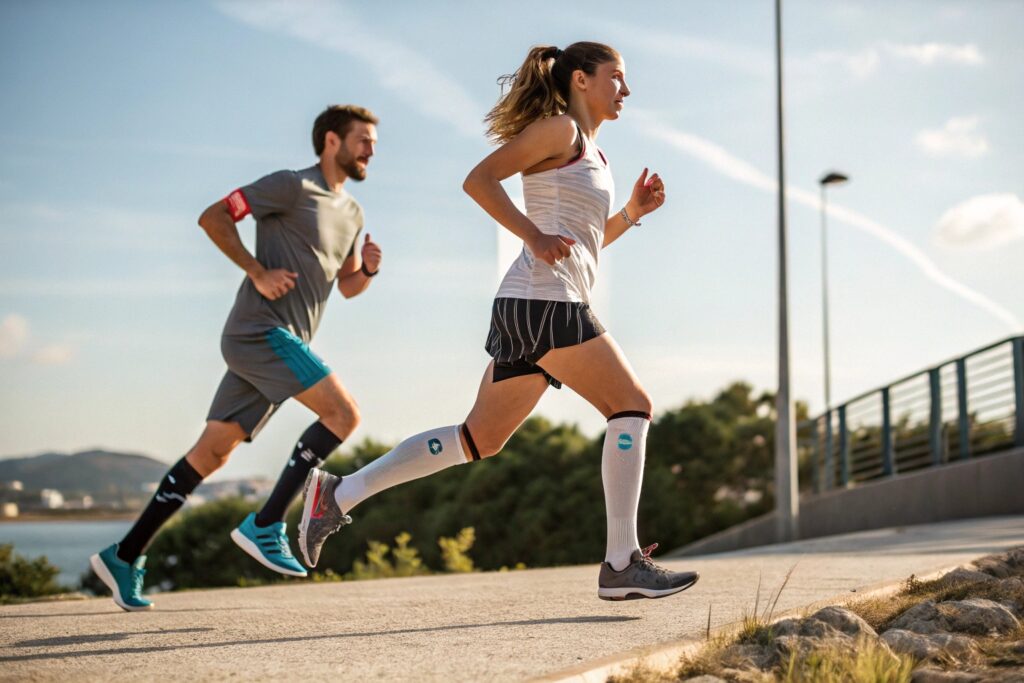
How Do Compression Socks Help in Athletic Recovery?
Athletes wear compression socks before, during, and after workouts to minimize delayed onset muscle soreness (DOMS) and improve performance. By boosting blood flow, they help flush out metabolic waste like lactic acid.
In fact, many studies—including this one by the Journal of Sports Science—have shown improved recovery markers in athletes wearing compression gear. Additionally, the use of gradient compression gear in sports is linked to enhanced endurance and performance.
What Styles and Compression Levels Are Best for Sports Use?
There’s no one-size-fits-all. Runners prefer knee-high designs, while gym-goers opt for ankle-length styles. Most brands offer:
- 15–20 mmHg for casual sports
- 20–30 mmHg for intense workouts
- Arch support and cushioned zones for shock absorption
At GlobalSock, we offer small-batch customization for over 1,000 seasonal designs so clients can test different styles before scaling up. We also support private-label sports compression socks with sustainable fabric options.
What Certifications and Standards Should You Look For?
Trust and compliance are non-negotiable when it comes to medical and sportswear.
Buyers should look for OEKO-TEX, CE, and CNAS certifications, which confirm compression accuracy, material safety, and international compliance.
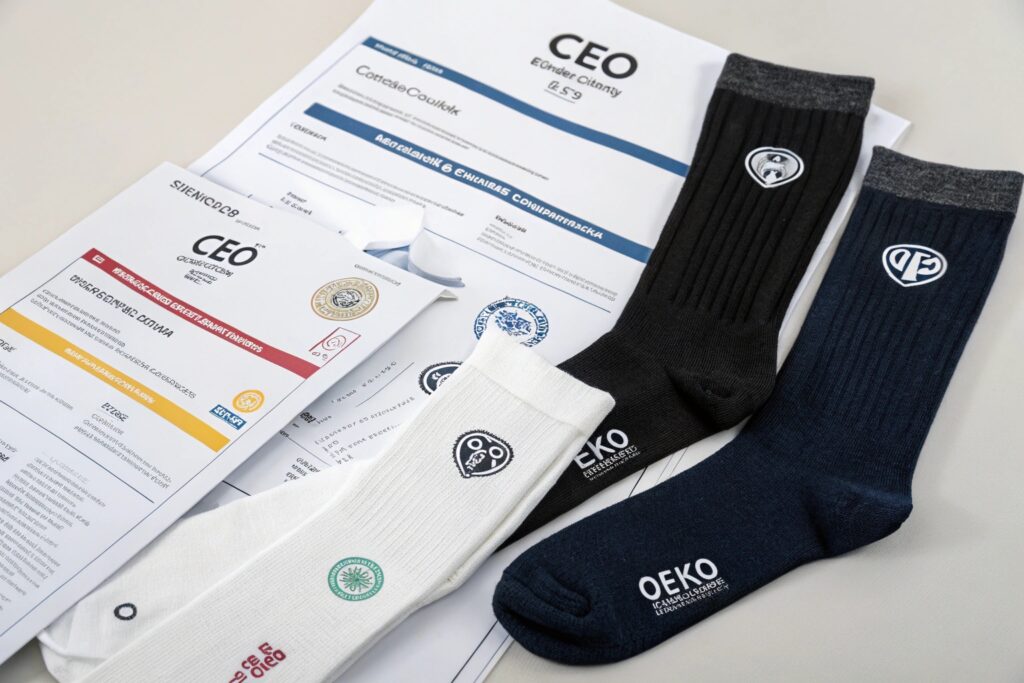
Why Is Third-Party Testing So Important?
Third-party testing confirms that socks meet advertised compression ratings and are safe for sensitive skin. GlobalSock’s in-house CNAS lab performs tests for:
- Pressure mapping
- Shrinkage rates
- Colorfastness
- Biocompatibility
We also provide QR code traceability for every batch—a feature highly appreciated by our European clients dealing with strict EU standards. See a similar compliance overview from Intertek.
Which Countries Have Strictest Import Regulations for Compression Wear?
The U.S., EU, and Japan lead the list. In the U.S., FDA-compliant socks need clear medical classification and packaging. In the EU, labeling and eco-compliance are key.
At GlobalSock, we help clients navigate these regulations by offering ready-to-clear inventory, localized packaging, and real-time documentation access through our digital showroom.
Conclusion
Compression socks are more than just a health trend. They’re a well-designed, performance-driven product supported by science and quality control. Whether you're sourcing for athletes or hospitals, knowing what makes these socks effective—compression science, fabric choice, precision knitting, and certification—can give you a competitive edge. At GlobalSock, we combine R&D speed with real-time compliance to help you deliver compression socks that truly perform.

